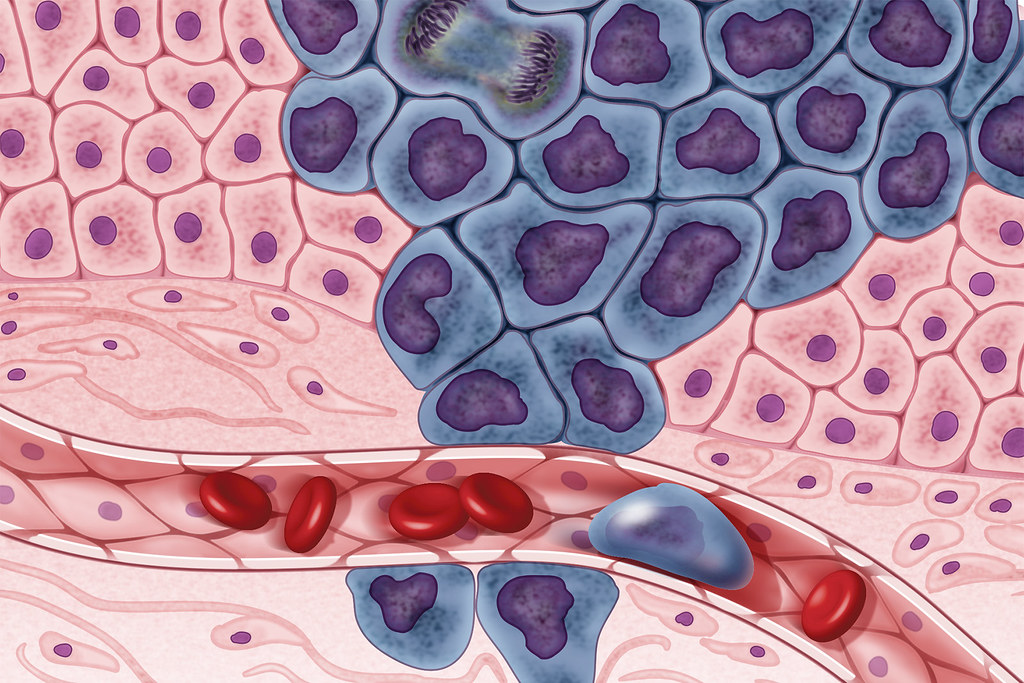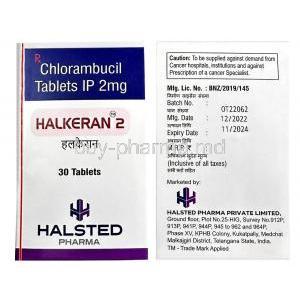Palbociclib
Introduction to Palbociclib
Palbociclib, a type of therapy that targets areas, has been getting a lot of focus for treating different types of cancers, especially breast cancer. Now, let's explore its background, how it works, and the process it went through to be developed and approved.
Overview of Palbociclib
Palbociclib, sold as Ibrance is a type of medication categorized as cyclin kinase (CDK) inhibitors. It targets the activity of CDK 4 and 6 which play a role, in controlling the cell cycle ultimately slowing down the growth of cancer cells.
Mechanism of Action
Palbociclib works by interfering with the cell cycle, specifically preventing the transition from G1 to S phase through the inhibition of CDK 4 and 6. This action helps stop the proliferation of cancer cells.
Development and Approval
Palbociclib underwent preclinical and clinical testing to prove its effectiveness and safety. The U.S. Food and Drug Administration (FDA) provided accelerated approval for Palbociclib in 2015 when used alongside an aromatase inhibitor to treat metastatic breast cancer that is HR+ and HER2.

Uses of Palbociclib
FDA-Approved Uses
- Palbociclib is a targeted therapy that blocks CDK4 and CDK6, enzymes important for cell division.
- By inhibiting these proteins, palbociclib slows down dividing cells, thereby slowing cancer growth1.
Investigational Uses
Apart from the uses approved by the FDA, researchers are looking into ways Palbociclib could be helpful in treating different types of cancer and in various treatment scenarios.
- Recent studies indicate that Palbociclib shows promise in; Clinical Trials and Ongoing Research; Studying how effective Palbociclib is in treating cancers such as lung cancer, melanoma and lymphoma.
- Potential Future Uses: Investigating how Palbociclib could work alongside immunotherapy or other targeted treatments to enhance their effects in fighting cancer.
Off-Label Use of Palbociclib
Overview of Off-Label Use
Using medication for purposes other than those officially approved by regulatory bodies is known as off-label use. Although off-label use of Palbociclib is not common, healthcare providers may sometimes consider using it based on their judgment and new research findings.
Current Off-Label Applications
Ongoing trials are investigating its effectiveness in other cancer types:
- Head and Neck Cancers
- Non-Small Cell Lung Cancer
- Recurring Brain Metastasis
- Squamous Cell Carcinoma
- Central Nervous System Tumors
- Other Solid Tumor Types1.
Research and Development in Off-Label Indications
Ongoing studies and trials play a role in assessing the effectiveness and safety of Palbociclib for uses not approved by regulatory authorities. The goal of these endeavors is to broaden treatment options and enhance results for individuals facing forms of cancer.
How Palbociclib Works
Exploring how Palbociclib works gives us an understanding of its potential benefits for treating cancer.
Targeted Therapy Mechanism
Palbociclib works by blocking CDK 4 and 6, which are important in controlling the cell cycle. This focused method helps to reduce harm to cells while effectively attacking cancerous cells.
Cell Cycle Inhibition
By stopping the cell cycle in its tracks during the G1 phase, Palbociclib halts the growth of cancer cells, ultimately resulting in cell cycle arrest and cell death.
Impact on Cancer Cells
Palbociclib blocks the activity of CDK 4 and 6, which interrupts the communication pathways crucial for the growth and survival of cancer cells, ultimately leading to cancer effects.

Pharmacokinetics and Pharmacodynamics
The way Palbociclib moves through the body and how it works in the body are factors that affect how well it works, its safety, and how much should be taken. Knowing about these things is key to getting the results from treatment and reducing any unwanted effects.
Dosage and Administration of Palbociclib
Standard Dosage Regimens
The appropriate amount of Palbociclib to take can differ based on the reason for the use of patient traits and other medications being taken at the same time. Usually, it is taken by mouth a day for a set period.
Administration Instructions
It is recommended to take Palbociclib with a meal to improve its absorption and minimize stomach-related side effects. Remember to swallow the tablets whole and avoid crushing, splitting, or chewing them.
Considerations for Dose Modifications
Adjustments to the dosage might be required depending on patient characteristics like liver issues, blood-related side effects, or the simultaneous use of other medications that interact. It is crucial to monitor and make necessary changes to the dosage to achieve the best treatment results.
Monitoring and Follow-Up
It is important to check on patients who are taking Palbociclib to evaluate how well the treatment is working, address any side effects, and catch any problems early. Follow up visits allow healthcare professionals to make changes, to the treatment plan if necessary and offer support.cco
Common Side Effects of Palbociclib
Overview of Adverse Reactions
Although Palbociclib is usually well received, it can lead to side effects ranging from mild to severe. Some common adverse reactions include issues, blood-related abnormalities, tiredness, and possibly long-lasting impacts.
Gastrointestinal Effects
Palbociclib can lead to digestive problems like nausea, vomiting, diarrhea, and stomach discomfort. These issues can often be controlled with care and tend to get better with time.
Hematologic Effects
Palbociclib may affect the bone marrow, causing issues with blood cell levels, like neutrophils, white blood cells, and platelets. It's important to check blood counts and adjust doses as needed to handle these side effects.
Fatigue and Weakness
- During Palbociclib treatment, patients might feel a lack of energy or experience sluggishness.
- Getting rest, staying hydrated, and engaging in light physical activity could ease these issues.
Potential Long-Term Effects
The lasting impacts of Palbociclib are currently being looked into with worries involving decreased bone density, heart-related issues, and the development of additional cancers. It is crucial to monitor and follow up over the long term to detect and handle any delayed complications efficiently.
Storage and Handling Precautions
Storage Conditions
Be sure to store Palbociclib tablets in their packaging at room temperature, away from any moisture or heat. Remember to keep them out of reach of children and pets.
Dispensing Instructions
Pharmacists are required to give out Palbociclib in its container, with the correct labeling and patient information leaflet. Additionally, they must offer guidance on how to store, administer, and dispose of the medication.
Handling Recommendations
Healthcare professionals need to be careful when dealing with Palbociclib tablets to prevent any contamination and to ensure dosing and proper administration. After handling the medication, they should wash their hands thoroughly. Wear suitable protective gear if required.
Interactions with Other Medications
Drug-Drug Interactions
When using Palbociclib, it's important to check how it might interact with medicines, as this could impact their effectiveness or safety. Before prescribing Palbociclib, make sure to examine the medications that patients are already taking and assess for any interactions.
Potential Effects on Pharmacokinetics
Palbociclib could possibly impact the activity of drug-metabolizing enzymes, leading to changes in how other medications work in the body. Adjusting doses or considering treatment options might be needed to reduce the chances of experiencing negative effects or treatment not working effectively.
Recommendations for Co-Administration
Healthcare professionals need to weigh the advantages and drawbacks of combining Palbociclib with other drugs, especially those that have a limited therapeutic range or established interactions. It is crucial to monitor for any negative effects and evaluate the treatment's effectiveness.

















